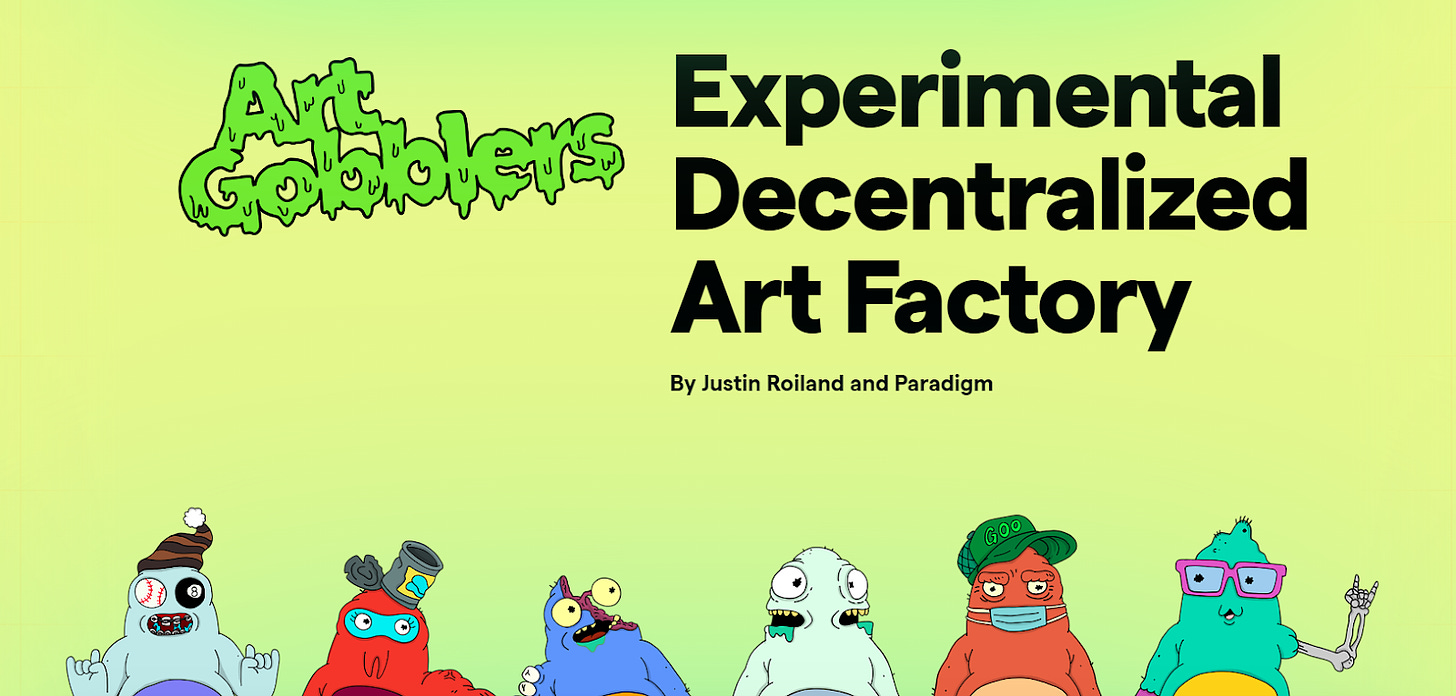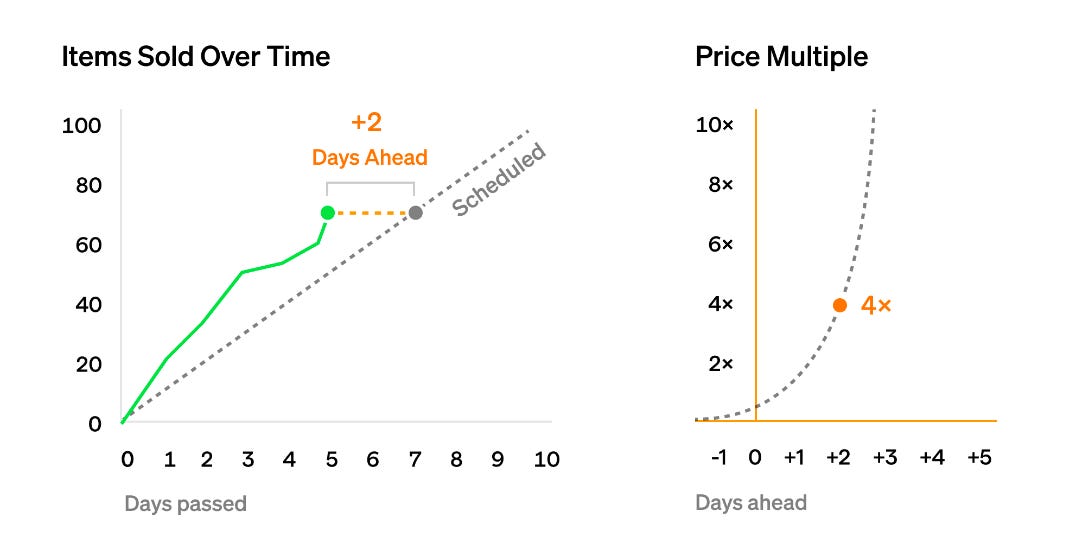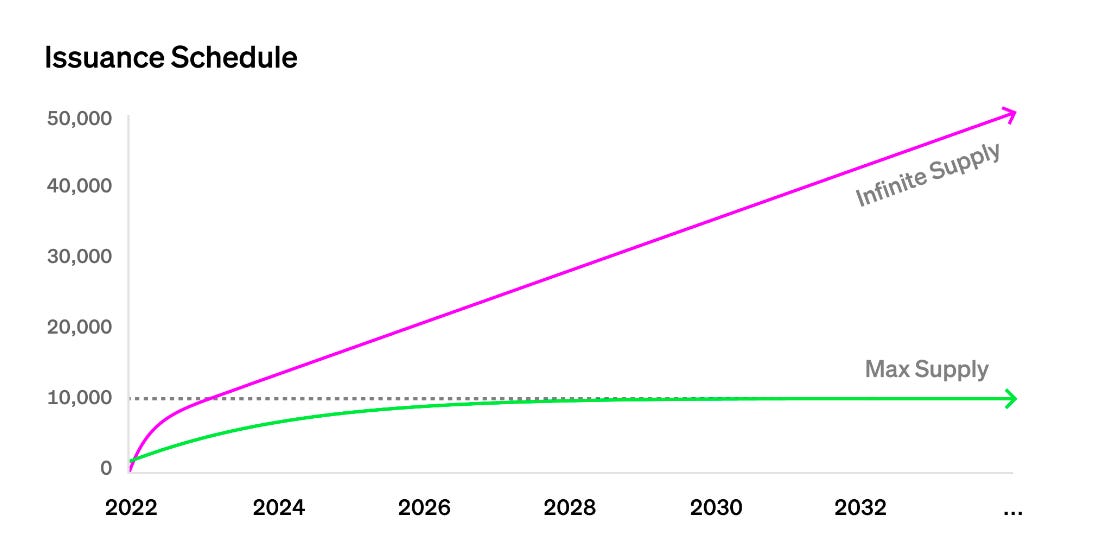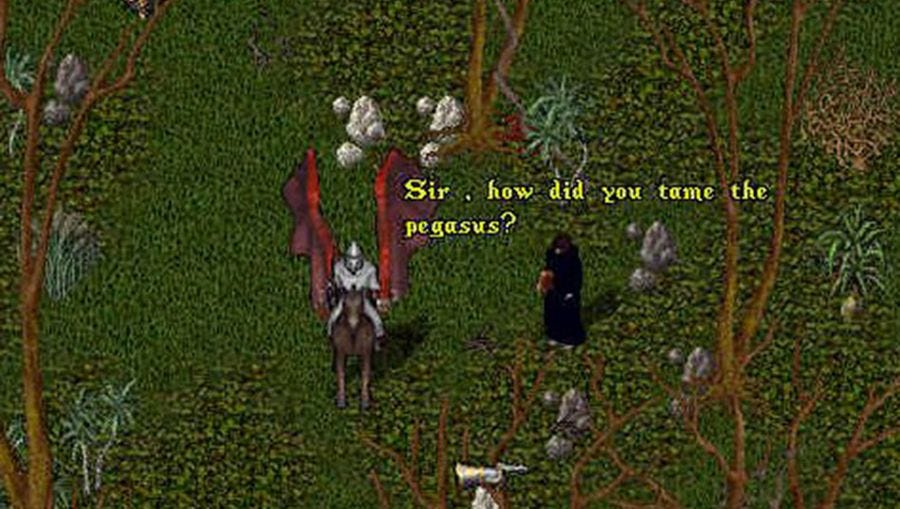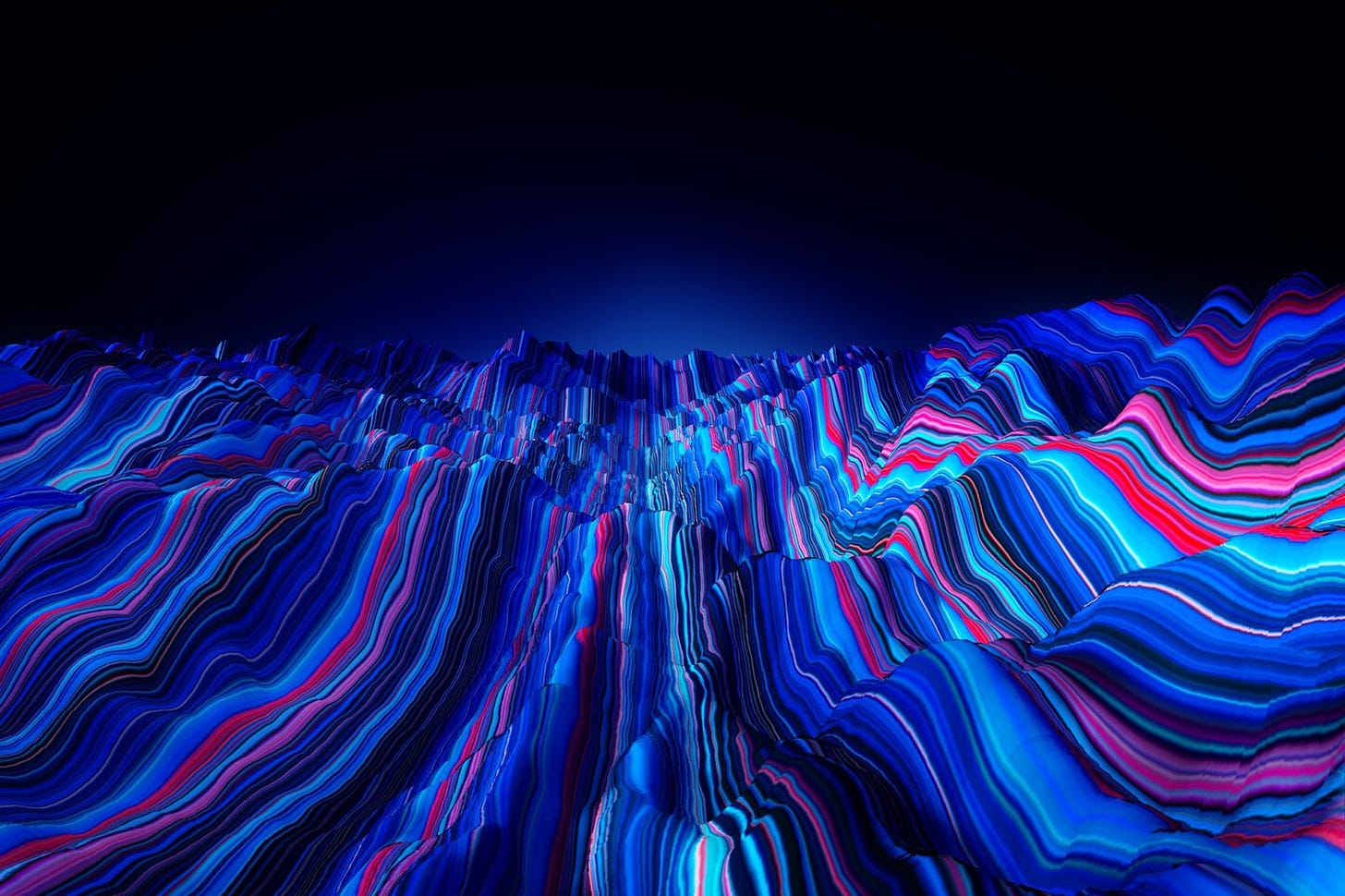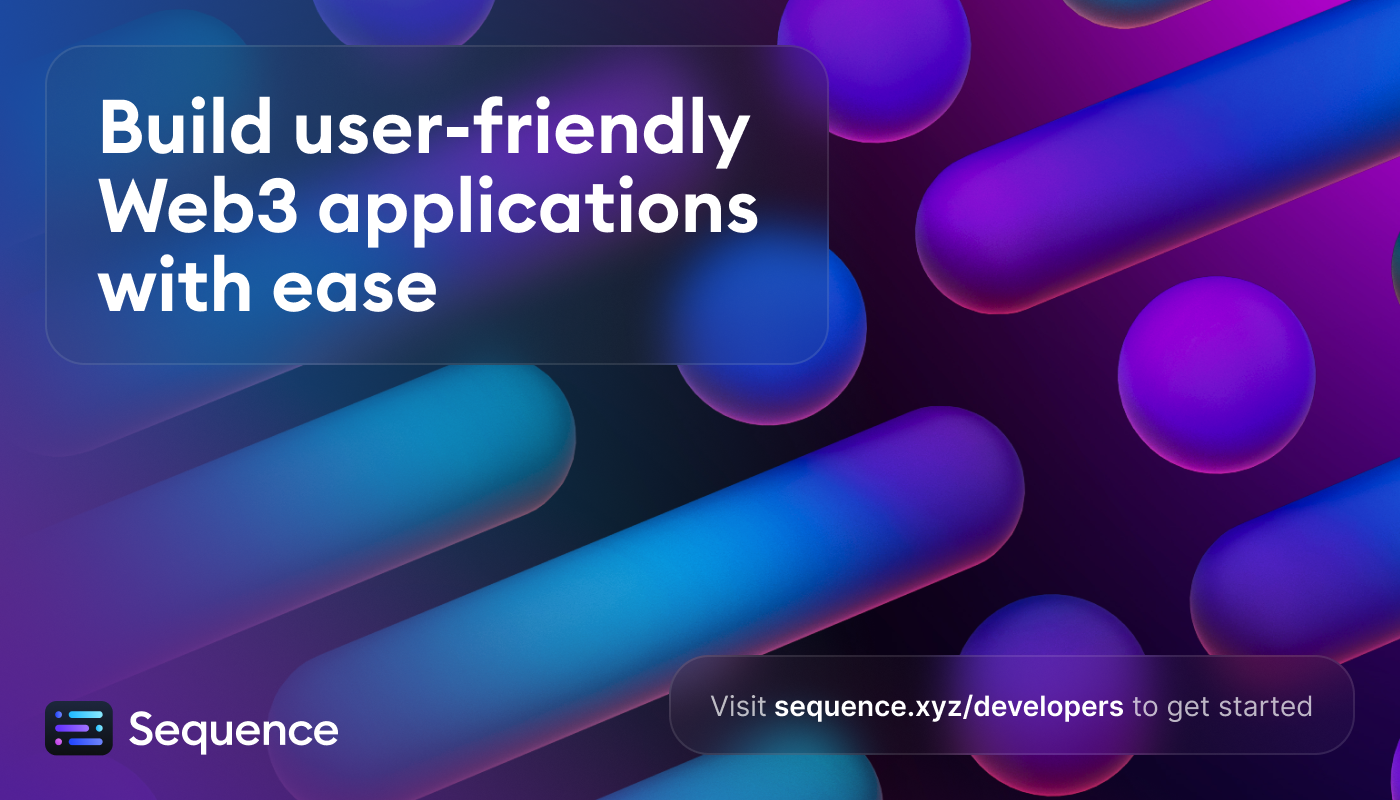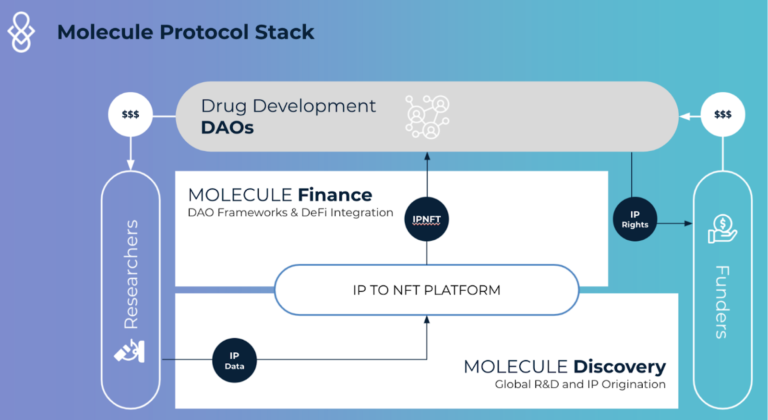Metaversal is a Bankless newsletter for weekly level-ups on NFTs, virtual worlds, & collectibles
Dear Bankless Nation,
The metaverse may be just starting to form, but virtual land crises have been a thing for 30 years.
The problem? Making virtual land mimic physical land too closely with regards to scarcity can lead to economic problems that can kill the growth of games and virtual world efforts.
I wrote about this topic earlier this year and noted how NFT projects could consider an older concept, the digital land tax + citizen’s dividend combo, as a way to address such overspeculation woes.
However, now the NFT space has produced a new mechanism that could seemingly also bring sustainability to virtual land sales. For today’s Metaversal, let’s take a closer look at Variable Rate Gradual Dutch Auctions and how metaverse NFT projects might use them.
-WMP
🙏 Sponsor: Sequence—developer platform + smart wallet to build user-friendly web3 apps✨
Paradigm is a crypto investment firm whose research arm is stacked with some of the brightest minds in the web3 ecosystem.
Over the last year, Paradigm’s researchers have published many innovative NFT primitives and mechanisms, including Floor Perps, RICKS, Mortys, RICKS, MultiRaffle, and Gradual Dutch Auctions (GDAs).
These researcher’s latest innovation, Variable Rate GDAs (VRGDAs), notably allows NFT issuers to “sell tokens close to a custom schedule over time by raising prices when sales are ahead of schedule and lowering prices when sales are behind schedule,” as the creators have explained.
Paradigm developed VRGDAs for Art Gobblers, a digital art experiment they’ve helped incubate alongside Justin Roiland, the co-creator of Rick and Morty.
With Art Gobblers, the idea is to launch a self-sustaining ecosystem centered around creating and collecting art, which the project’s Draw Tool will factor into. Art Gobblers will be released as a finished product, so once its base free mint is complete, it needs to be able to handle additional NFT issuances, i.e. creations, sustainably without manual human interference.
Here, cue in VRGDAs, which are designed to accommodate the issuance of two NFTs — one with a fixed supply, e.g. 10,000, and another with an uncapped supply that is released indefinitely and steadily over time — without having to rely on scheduled auctions.
In their post outlining VRGDAs, Paradigm’s researchers offered this general example of how the mechanism works:
“Imagine a simple schedule where we want to sell 10 NFTs per day. We set a starting price of 1 token for the first NFT.
Suppose it is currently day 5, so we should have sold 50 NFTs. However, demand has been high, and we have sold 70. We weren’t supposed to sell 70 NFTs until day 7, so we are two days ahead of schedule.
As a result, we want to charge a higher price going forward. We use an exponential curve to determine how much higher. This can vary based on parameters, but in this case, let’s say we use 2 days ahead of schedule, so that we increase our price by a factor 2*2 = 4, so since our initial price was 1 token, the new price will be 4 tokens, making it harder to buy more NFTs.
Ten days later, on day 15, we should have sold 150 NFTs, but users have only bought 120, the amount they should have bought by day 12, meaning we are three days behind schedule. We adjust the price [downward], making it easier for users to buy more NFTs.”
Like I mentioned in my intro, virtual land crises are nothing new. Over the years, we’ve seen them rear their heads in mainstream franchises like Ultima Online, Final Fantasy, and EVE Online.
How do these land crises come about, though? Historically speaking, they happen when virtual land is modeled too closely after physical land. Virtual land doesn’t have to be scarce or necessary for in-game experiences, but when virtual land is made to be too artificially scarce, markedly advantageous, and overly valuable from the context of its location, speculators tend to take over, and their high prices and rent-seeking then block actual users and builders out.
One avenue to potentially tackle this problem is a metaverse land tax, which works to drive out overspeculation. But if that approach isn’t your style, I think Variable Rate GDAs are an interesting new way to similarly mute metaverse overspeculation.
Why do I say? Because with the two-token approach of Variable Rate GDAs, virtual world projects can introduce an infinite land supply element in a flexible and sustainable manner so that anyone can essentially buy in at any time. This “open supply” aspect can mitigate the aggressive land-grab mentalities that have spurred virtual land crises in the past.
For example, let’s say a virtual world NFT project uses a Variable Rate GDA system to release 10k “Capital City” NFTs + a constant uncapped supply of “Countryside” NFTs over time. The Capital NFTs will undoubtedly trade at a premium and have more prestige, but their prices and limited supply wouldn’t prevent regular users from joining the world thanks to the infinite supply of the price-curved “Countryside” NFTs, which can act as a pressure release valve for demand and prevent overspeculation. Growth wouldn’t be stifled, but ever facilitated.
Variable Rate GDAs are interesting because they let a project issue NFTs per a customized schedule while also making it easy for people to buy in at essentially any time. As such, the mechanism can be used for a lot of things, and I think sustainable virtual land sales are absolutely one of them.
At the same time, Variable Rate GDAs are brand new. Art Gobblers isn’t live yet, so we don’t have an example of the approach to inspect in the wild so far. However, Paradigm’s Transmissions11 has already published a reference implementation with multiple possible issuance schedules, so it’s only a matter of time until we start seeing more Variable Rate GDA projects arriving. In the metaverse ecosystem, let’s see which upstart project makes the leap first!
William M. Peaster is a professional writer and creator of Metaversal—a Bankless newsletter focused on the emergence of NFTs in the cryptoeconomy. He’s also recently been contributing content to Bankless, JPG, and beyond!
Subscribe to Bankless. $22 per mo. Includes archive access, Inner Circle & Badge.
Build user-friendly web3 applications with ease and deliver a seamless web3 experience to your users! Sequence is a comprehensive developer platform and smart wallet for the Ethereum + EVM ecosystem.
-
Seamless and secure onboarding
-
No gas fees for your users
-
Direct NFT purchase with credit/debit
-
NFT marketplace protocol, and more tools, so you can deliver a seamless web3 experience to your users.
👉 Integrate Sequence Wallet into your app
👉 Make your web3 app user friendly with developer tools
Not financial or tax advice. This newsletter is strictly educational and is not investment advice or a solicitation to buy or sell any assets or to make any financial decisions. This newsletter is not tax advice. Talk to your accountant. Do your own research.
Disclosure. From time-to-time I may add links in this newsletter to products I use. I may receive commission if you make a purchase through one of these links. Additionally, the Bankless writers hold crypto assets. See our investment disclosures here.


